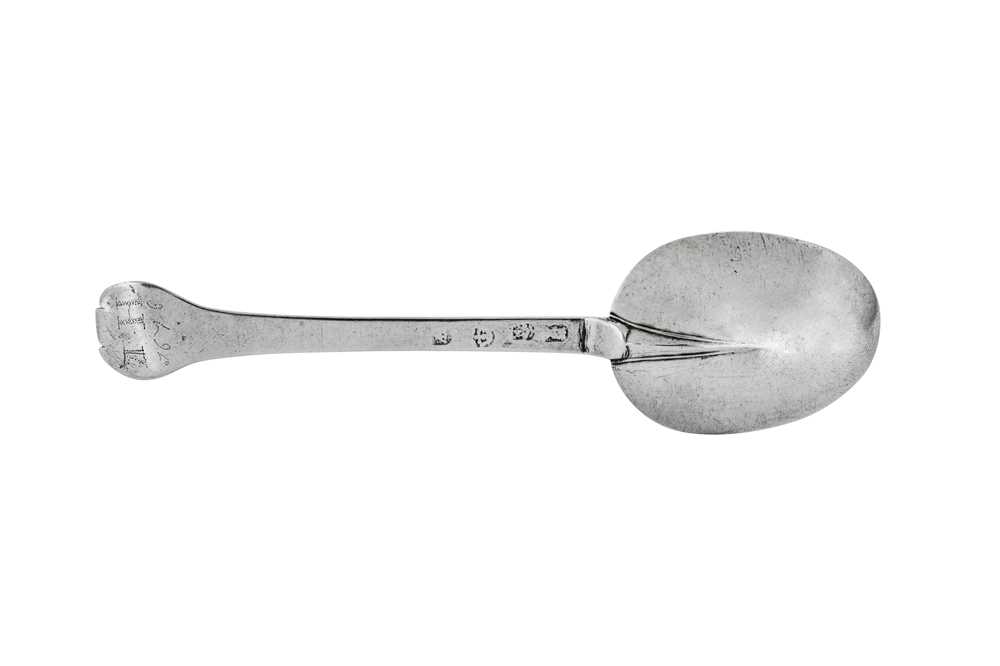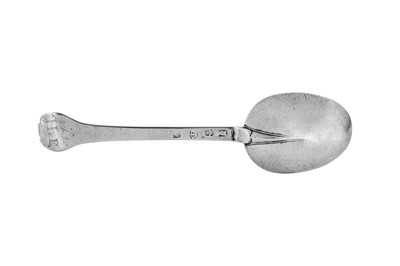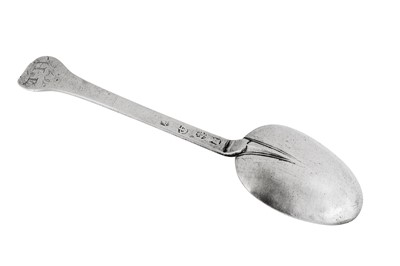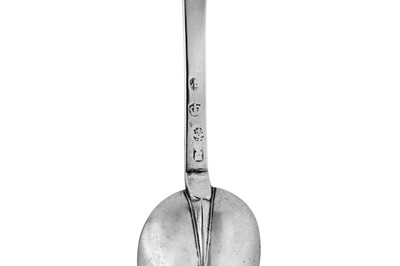19th Oct, 2022 13:00
Silver & Objects of Vertu
A rare Charles II East Anglian provincial sterling silver spoon, Norwich dated 1676 by Arthur Haslewood II (free. 26th March 1661, d. 1684)
A rare Charles II East Anglian provincial sterling silver spoon, Norwich dated 1676 by Arthur Haslewood II (free. 26th March 1661, d. 1684)
Trefid pattern, with moulded rat tail heel. The terminal prick dot engraved with contemporaneous initials I . H above the date 1676, the I later enhanced with additional prick dotting to form it into an A. Marked to the stem with makers mark AH ligatured, crown, rose, castle upon lion passant.
Length – 18.8 cm / 7.45 inches
Weight – 54 grams / 1.74 ozt
The Haslewood family was the most well-known of the Norwich silversmiths, the workshop ran by three generations from circa 1625-1740. Christopher Hartop notes that the mark of Arthur Haselwood II is found on approximately 75 objects, of which 46 are ecclesiastical items, leaving only 30 or so for domestic pieces. His widow Elizabeth took over the workshop upon his death on November 14th 1684, it is clear than under her that the Haslewood workshop continued to prosper tenure until her death on January 22nd 1715. She and her husband are buried in the same tomb in St Andrew’s Church, Norwich.
The assay office of Norwich, along with Bristol, represents the rarest official assay offices in English silver, although granted assay in 1423, it was not until 1565 that assay marks became formally employed in the city. While Norwich (and also Bristol) was included in the 1701 bill to grant assay offices to several towns outside of London, only a slim handful of pieces are known from either town at this time. It is surmised that in Norwich production of silver slowed down considerably and was sent for marking elsewhere in the 18th century.
A trefid spoon also by Arthur Haslewood II, where the town mark is struck in the bowl is illustrated in Hartrop, C., (2004), East Anglian Silver 1550-1750, Cambridge: John Adamson, fig 18, p. 52. The movement of the marks, which use the same punches, to all be on the stem such as on the present lot confirms as post-1670 date as supported by the engraved date.
Sold for £4,750
Includes Buyer's Premium
Do you have an item similar to the item above? If so please click the link below to submit a free online valuation request through our website.






